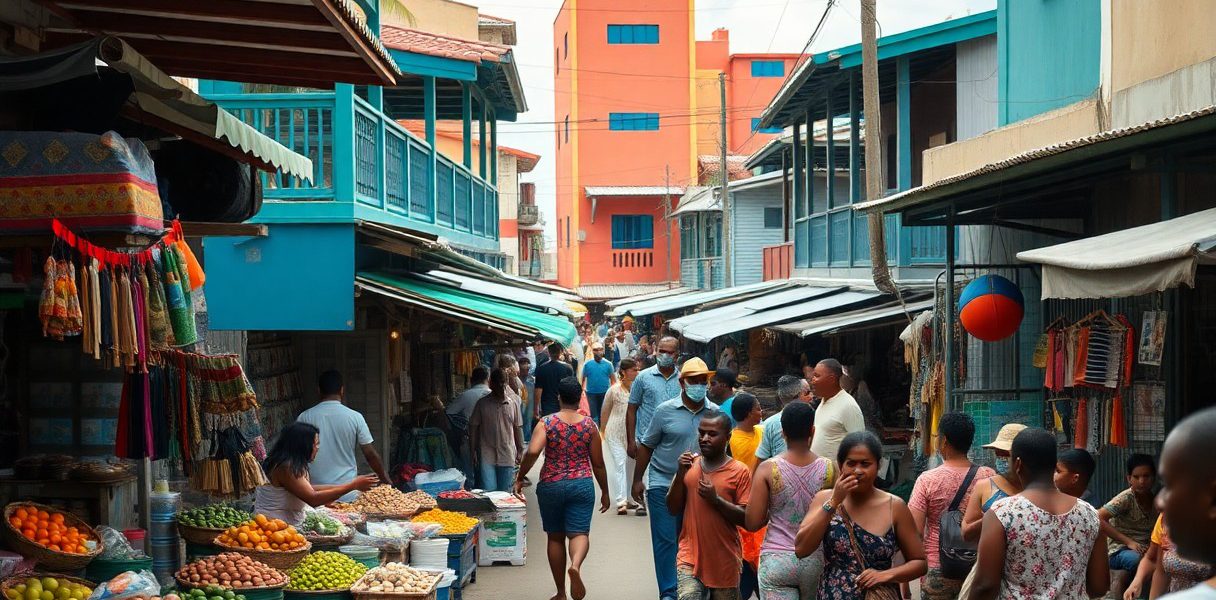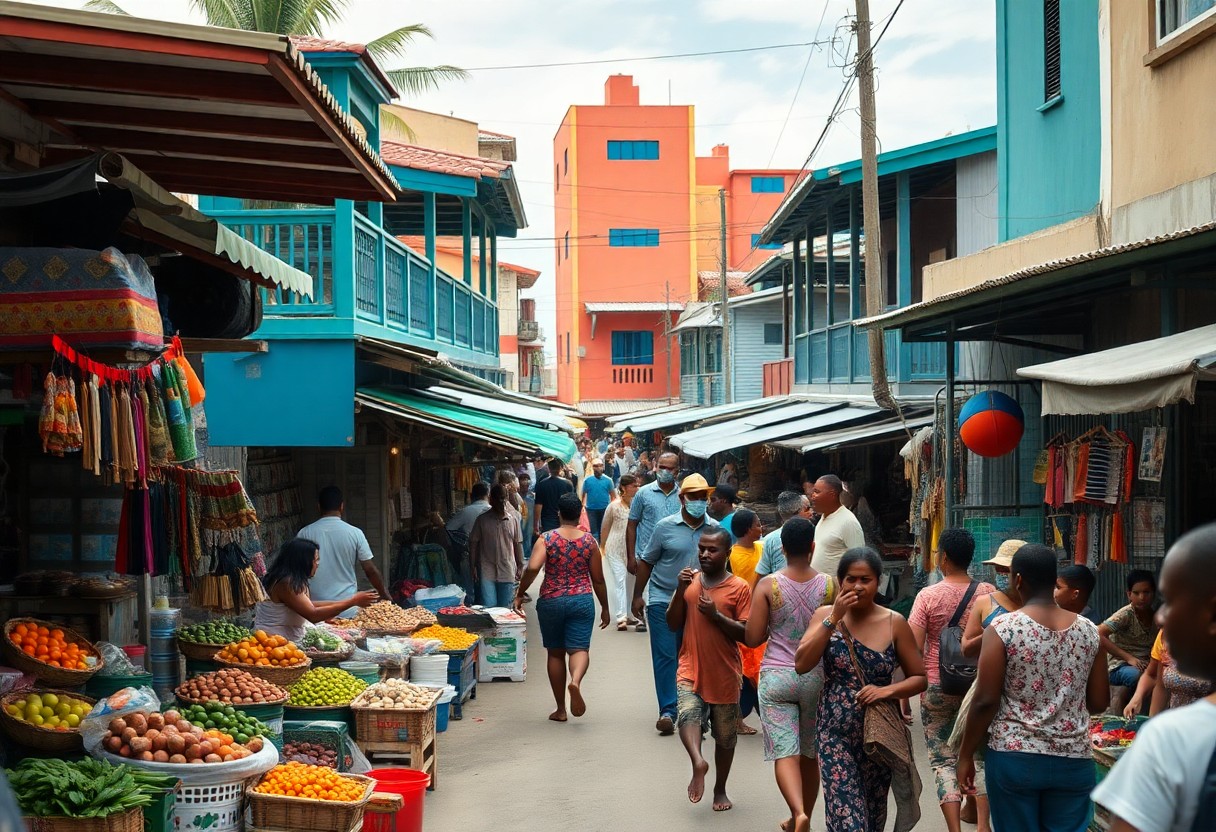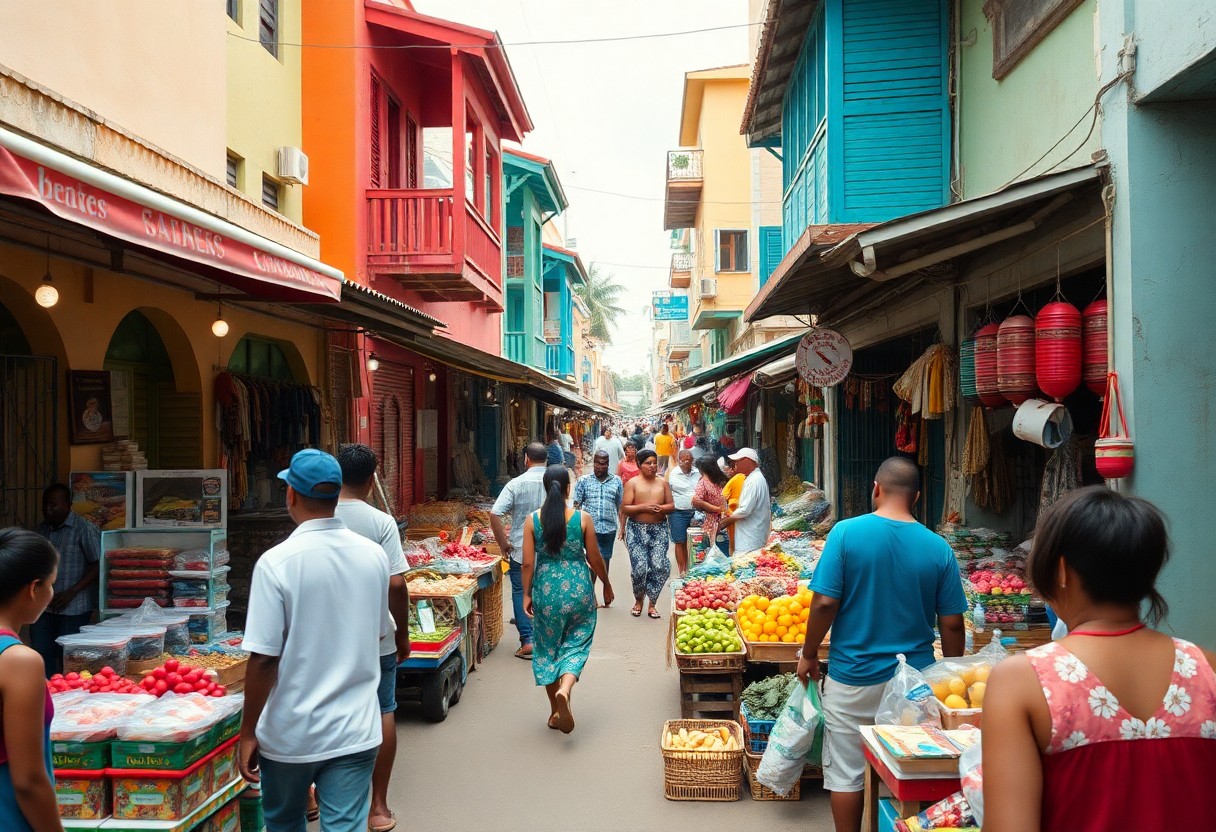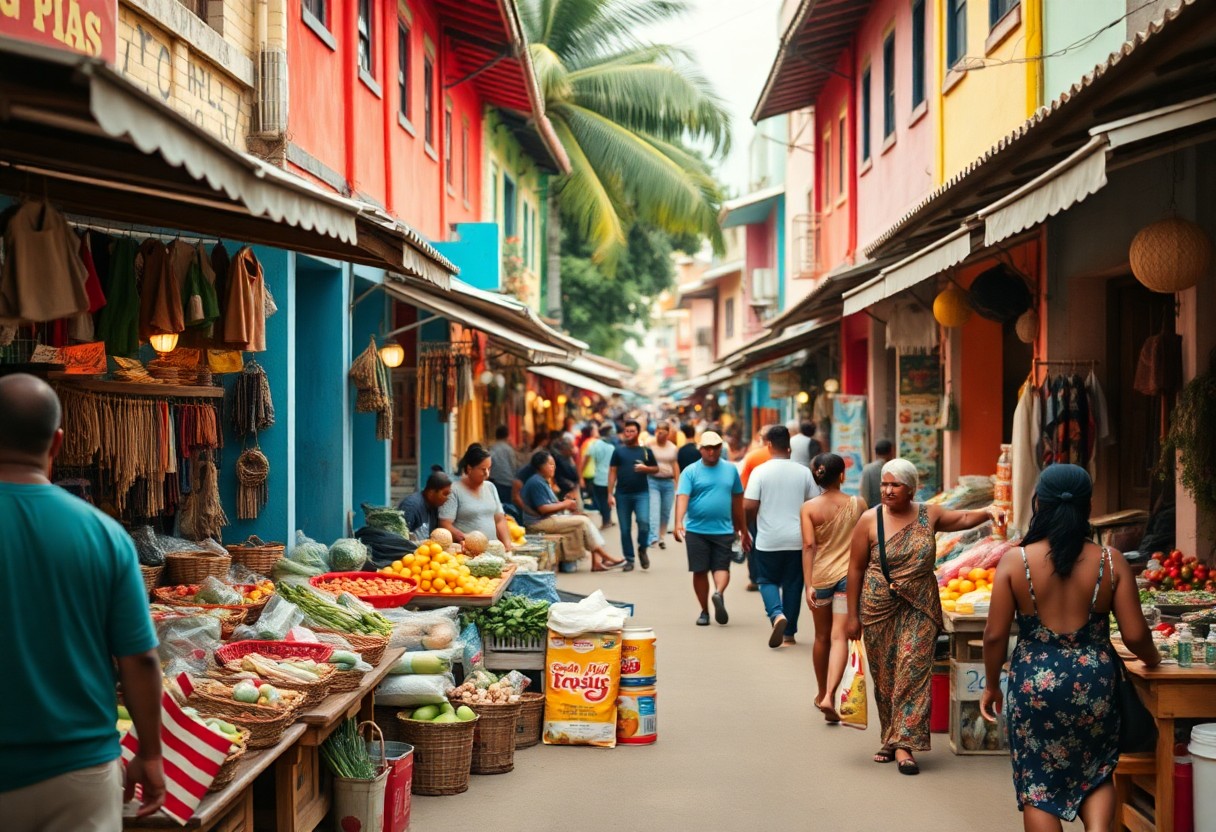
Belize’s Poverty Issues: Navigating Economic Challenges
Belize, a colorful yet diminutive country nestled in Central America, grapples with significant economic hurdles that impede its development and overall prosperity. You might be curious about why this picturesque tropical haven continues to face ongoing poverty, despite its breathtaking natural landscapes and abundant tourism prospects. The economic challenges in Belize arise from a complicated web of interconnected factors, which include a lack of industrial diversification, an excessive dependence on agriculture and tourism, and fragile economic frameworks that leave the country susceptible to external shocks. Gaining insight into Belize’s economic environment unveils a layered narrative filled with historical limitations and persistent obstacles. The nation’s small population, restricted domestic market, and reliance on outside economies amplify its vulnerabilities, making it especially sensitive to shifts in the global economy.

Understanding the Core Factors Contributing to Belize’s Economic Struggles:
- Belize’s economic challenges are primarily attributed to inadequate industrial diversification, with a strong reliance on tourism, agriculture, and offshore financial services. This dependency renders the economy particularly vulnerable to external shocks and shifts in global markets.
- Structural impediments, such as low levels of education, elevated unemployment rates, and uneven income distribution, further exacerbate enduring poverty, resulting in significant disparities between urban and rural areas.
- Historical influences, including the legacy of colonialism, insufficient infrastructure development, and geographical hurdles, have stunted Belize’s economic growth, hindering substantial investment in essential sectors and obstructing sustainable economic advancement.

Delving into the Historical Underpinnings of Belize’s Economic Issues
The economic framework of Belize is characterized by a complex interweaving of historical events that reveal significant challenges affecting its developmental path. The country’s economic struggles are deeply embedded in a long history of external exploitation, a lack of resource diversification, and the structural inequalities that stem from colonial domination. The consequences of economic marginalization continue to inhibit Belize’s ability to cultivate sustainable prosperity, tracing back to its origins as a colony focused mainly on resource extraction.
Examining the Colonial Economic Framework’s Effects on Belize
The colonial economic systems established in Belize were primarily designed to extract natural resources for the gain of European powers, with particular emphasis placed on the harvesting of mahogany and logwood. This extractive approach resulted in a concentration of wealth among foreign investors, significantly limiting local populations’ access to economic opportunities. The systematic exclusion of local and indigenous communities from vital economic decision-making processes established a pattern of dependency that continues to shape the nation long after it achieved independence.
Analyzing Post-Independence Economic Challenges in Belize
Investigating Belize’s economic difficulties reveals intricate dynamics that pose ongoing challenges to its development. You’ll observe that limited economic diversification and a strong reliance on tourism and agriculture constrain the nation’s capacity for substantial economic growth. The small scale of the national economy, coupled with its vulnerability to external economic shocks, complicates efforts to attain sustainable economic progress.
However, the narrative surrounding Belize’s economic challenges is far more complex than merely identifying economic limitations. You’ll recognize that structural barriers, such as insufficient educational infrastructure, brain drain, and restricted access to capital, have severely hampered economic mobility. Belize’s geographical isolation, limited population, and susceptibility to external economic fluctuations further complicate its economic trajectory, making sustainable development a continuous challenge that necessitates comprehensive and strategic interventions.
Exploring the Key Industries That Drive Belize’s Economic Performance
A detailed economic evaluation of Belize uncovers a complex landscape marked by limited industrial diversity. You’ll discover that the economic structure is heavily reliant on a few primary sectors, which struggle to produce significant national wealth. The interconnected nature of these industries highlights both the challenges and opportunities for economic advancement in this Central American nation.
The Essential Role of Agriculture in Belize’s Economic Structure
Historically, prior to the 1980s, agriculture functioned as Belize’s primary economic engine. You might be surprised to learn that sugar, citrus fruits, and bananas still represent major export commodities today. Even though their contribution to the national GDP has declined, these agricultural products remain central to understanding Belize’s economic foundation and its ongoing dependence on primary sector activities.
Evaluating the Significance of Belize’s Fisheries Industry
A vital segment of Belize’s economic landscape is its marine resource sector. You will find that seafood exports, particularly lobster and shrimp, are critical revenue sources for the nation’s economic stability.
The fisheries sector in Belize represents a crucial economic and environmental ecosystem. It is important to acknowledge that this industry faces significant challenges, such as overfishing, marine habitat degradation, and inadequate technological infrastructure. The potential for sustainable growth within this sector is severely limited by environmental pressures and a lack of investment in modernization techniques.
Tourism as a Transformative Economic Catalyst in Belize
Amidst economic constraints, tourism has emerged as a critical economic sector. You’ll discover that Belize’s breathtaking natural landscapes, vibrant marine reserves, and rich archaeological heritage attract numerous international visitors, generating significant foreign currency and creating invaluable job opportunities.
Tourism-related industries serve as a transformative economic force for Belize. It is vital to acknowledge that this sector has evolved over time, leveraging ecological attractions, cultural experiences, and adventure tourism to enhance its appeal. The economic impact of tourism extends beyond mere revenue generation; it also creates jobs, stimulates infrastructure development, and positions Belize as an enticing international destination.
Unpacking the Socioeconomic Challenges Hindering Belize’s Economic Growth
Upon examining Belize’s economic landscape, you’ll find that complex socioeconomic challenges significantly affect its growth. The country is confronted with:
- High unemployment rates
- Limited economic diversification
- Systemic income inequality
Understanding these interconnected issues unveils the depth and intricacies of Belize’s economic struggles.
Assessing the Current State of Education in Belize
Belize’s educational framework faces notable challenges due to insufficient resources and structural barriers. With low enrollment rates and inadequate infrastructure, many students find it difficult to access quality educational opportunities, severely hindering long-term economic mobility and growth prospects.
Economic Disparities in Belize’s Rural Areas
By focusing on rural communities, you’ll uncover significant economic disparities. Agricultural regions often endure limited economic opportunities, leading to persistent cycles of poverty and insufficient infrastructure development.
However, the challenges faced by rural areas extend beyond mere economic limitations. Geographic isolation, restricted access to healthcare, and a lack of educational resources compound the difficulties experienced by these communities, establishing systemic obstacles to economic advancement.
The Crucial Role of Wage Levels in Economic Stability
Above all, low wage structures play a central role in exacerbating Belize’s economic challenges. Minimum wage rates remain inadequate for sustainable living, contributing to widespread economic vulnerability among the populace.
A comprehensive analysis indicates that wage stagnation impacts multiple sectors. Limited job market diversity and a lack of wage growth prevent workers from achieving economic stability, perpetuating a cycle of economic constraint and diminishing purchasing power.
Current Government Initiatives Aiming for Economic Improvement
For Belize, effectively tackling its economic challenges requires strategic governmental interventions. You’ll observe that the administration is executing multifaceted economic development strategies aimed at stimulating growth and alleviating poverty. These initiatives emphasize diversifying economic sectors, improving infrastructure, and generating sustainable employment opportunities. By addressing critical economic barriers, the government aspires to reshape Belize’s economic landscape and create more robust pathways toward national prosperity.
Fostering Foreign Investment in Belize’s Key Economic Sectors
Through strategic policy implementation, Belize is actively working to attract international investors in the tourism, agriculture, and technology sectors. You can observe government efforts to streamline investment regulations by offering tax incentives and simplifying business registration processes. These strategies are designed to create a welcoming environment for foreign capital, which could potentially lead to job creation and stimulate economic growth in critical areas of national development.
Innovative Poverty Alleviation Programs in Belize
In a bid to combat economic disparities, Belize has developed targeted social welfare programs. You’ll find initiatives concentrating on education, healthcare, and skills training specifically for marginalized communities. These programs aim to provide essential support and create sustainable pathways out of poverty, addressing systemic economic challenges through comprehensive social interventions.
Consequently, Belize’s poverty reduction strategies encompass comprehensive social protection mechanisms. It’s crucial to understand that these programs include conditional cash transfers, vocational training, microfinance opportunities, and healthcare subsidies. By addressing multiple dimensions of poverty simultaneously, the government seeks to break cycles of intergenerational poverty. These interventions are tailored to target vulnerable populations, equipping them with essential resources and opportunities for economic mobility and social advancement.

Analyzing the Impact of External Forces on Belize’s Economic Structure
Numerous external forces have significantly shaped Belize’s economic landscape, creating intricate challenges that extend beyond its borders. You can observe how international economic pressures, trade dynamics, and global market frameworks have remarkably influenced the nation’s development trajectory. Colonial legacies and the ongoing effects of global economic systems continue to restrict Belize’s economic potential, limiting its capacity to achieve sustainable growth and prosperity.
The Influence of Global Market Dynamics on Belize’s Economy
External market forces have systematically positioned Belize at an economic disadvantage. You’ll discover that commodity price fluctuations and a lack of diversification severely limit the country’s economic resilience. Global trade mechanisms often marginalize smaller economies like Belize, creating structural barriers that obstruct significant economic advancement and the implementation of sustainable development strategies.
The Effect of International Aid and Debt on Belize’s Economic Landscape
Among the most significant external influences, international financial interactions have generated intricate economic challenges for Belize. You might notice how international debt and conditional aid packages create complex dependencies that limit economic autonomy. These financial relationships often impose strict conditions that can undermine long-term economic independence.
A thorough examination of international financial interactions unveils deeper systemic issues. You’ll find that multilateral lending institutions frequently attach stringent conditions to financial assistance, necessitating structural adjustments that may not align with Belize’s specific economic needs. The cumulative debt burden represents a substantial constraint on national economic development, consuming valuable resources that could otherwise be utilized for infrastructure, education, and economic diversification.
Recognizing the Economic Impacts of Climate Change on Belize
To thoroughly understand Belize’s economic challenges, it is essential to recognize the profound devastating impact of climate change on the nation. Rising sea levels, increasingly frequent hurricanes, and extreme weather events pose serious threats to Belize’s coastal infrastructure, agricultural productivity, and tourism-dependent economy. These environmental pressures create a cycle of vulnerability that severely undermines economic stability and development prospects.
Assessing Environmental Vulnerability in Belize
As a frontline nation confronting climate change, Belize endures severe ecological disruptions. Your understanding of the country’s economic struggles must take into account its environmental fragility. Coral reef degradation, coastal erosion, and shifting rainfall patterns directly threaten the nation’s natural resources, which are essential to its economic survival and resilience.
Identifying the Economic Consequences of Climate Change
The environmental challenges confronting Belize translate into direct economic repercussions. You’ll see how climate-induced disasters impose substantial financial burdens, damaging infrastructure, reducing agricultural yields, and disrupting tourism—key components of the national economy. These recurrent environmental shocks inhibit sustainable economic growth and perpetuate cycles of poverty.
Thus, the economic ramifications of climate change in Belize are multi-faceted and deeply interconnected. You’ll find that annual economic losses resulting from environmental disruptions can reach hundreds of millions of dollars, significantly affecting GDP, national budget allocations, and long-term developmental strategies. The compounding effect of these challenges generates a complex economic vulnerability that necessitates comprehensive, strategic interventions to mitigate and adapt.
A Comprehensive Overview of Belize’s Economic Challenges and Potential Opportunities
Following this detailed analysis, you can conclude that Belize’s economic difficulties arise from a web of complex historical, geographical, and structural factors. You’ll recognize how limited economic diversification, heavy reliance on tourism and agriculture, and enduring barriers to development have constrained the nation’s growth potential. Your insights reveal that colonial influences, susceptibility to external economic shocks, and inadequate infrastructure have significantly hindered Belize’s economic progress. Despite these obstacles, you can appreciate the ongoing efforts the country is making to strengthen its economic foundations and pursue sustainable development strategies that could ultimately transform its current economic landscape.
Common Inquiries Regarding Belize’s Economic Challenges and Realities
What are the primary economic challenges contributing to Belize’s ongoing struggles?
Belize faces considerable economic challenges driven by its small market size, limited industrial diversification, and heavy reliance on tourism and agricultural exports. The country’s economic vulnerabilities stem from external economic shocks, restricted domestic production capabilities, and a narrow economic base that complicates sustainable growth. High import costs and insufficient foreign direct investment further hinder economic development.
How has Belize’s historical context influenced its current economic situation?
Belize’s colonial history has profoundly impacted its economic framework, leaving a legacy of dependency and inadequate infrastructure development. The transition from British colonial rule to independence in 1981 introduced systemic economic challenges, such as uneven resource distribution, limited educational opportunities, and a fragmented economic framework that continues to obstruct comprehensive economic progress.
What specific factors hinder Belize from attaining rapid economic growth?
Multiple interconnected factors obstruct Belize’s economic advancement, including limited natural resource exploitation, minimal industrial manufacturing capacity, and significant brain drain of skilled professionals. The nation grapples with high unemployment rates, restricted access to advanced technological infrastructure, and a narrow economic ecosystem that complicates sustainable economic expansion. Geographic isolation and vulnerability to climate change further complicate economic development strategies.
The article Why Is Belize So Poor? Exploring the Country’s Economic Realities appeared first on Belize Travel Guide.
The Article Belize’s Economic Realities: Why Is the Country So Poor? Was Found On https://limitsofstrategy.com
The Article Belize’s Economic Challenges: Understanding Its Poverty Issues First Appeared ON
: https://ad4sc.com











